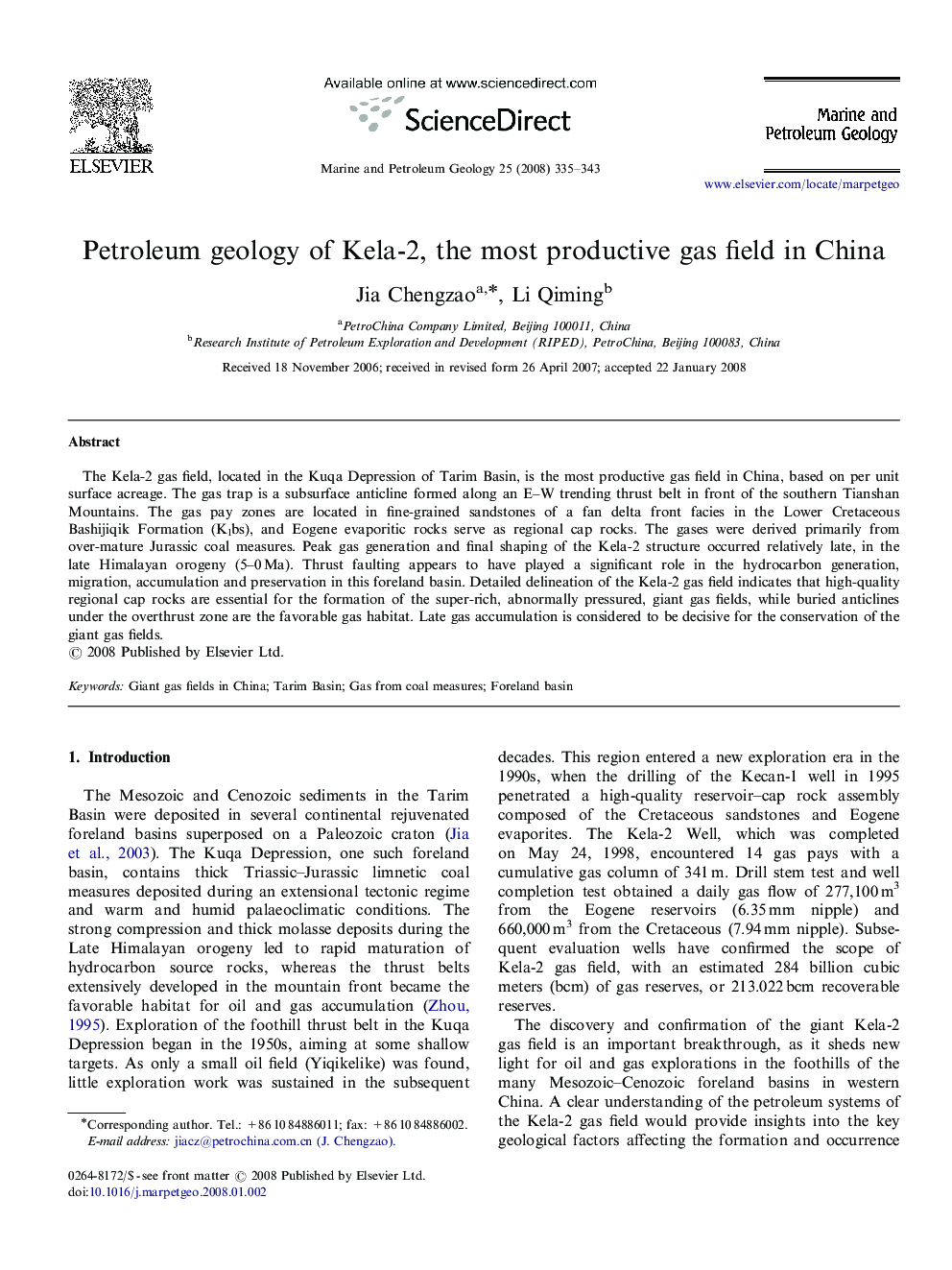| Article ID | Journal | Published Year | Pages | File Type |
|---|---|---|---|---|
| 4696634 | Marine and Petroleum Geology | 2008 | 9 Pages |
The Kela-2 gas field, located in the Kuqa Depression of Tarim Basin, is the most productive gas field in China, based on per unit surface acreage. The gas trap is a subsurface anticline formed along an E–W trending thrust belt in front of the southern Tianshan Mountains. The gas pay zones are located in fine-grained sandstones of a fan delta front facies in the Lower Cretaceous Bashijiqik Formation (Klbs), and Eogene evaporitic rocks serve as regional cap rocks. The gases were derived primarily from over-mature Jurassic coal measures. Peak gas generation and final shaping of the Kela-2 structure occurred relatively late, in the late Himalayan orogeny (5–0 Ma). Thrust faulting appears to have played a significant role in the hydrocarbon generation, migration, accumulation and preservation in this foreland basin. Detailed delineation of the Kela-2 gas field indicates that high-quality regional cap rocks are essential for the formation of the super-rich, abnormally pressured, giant gas fields, while buried anticlines under the overthrust zone are the favorable gas habitat. Late gas accumulation is considered to be decisive for the conservation of the giant gas fields.
